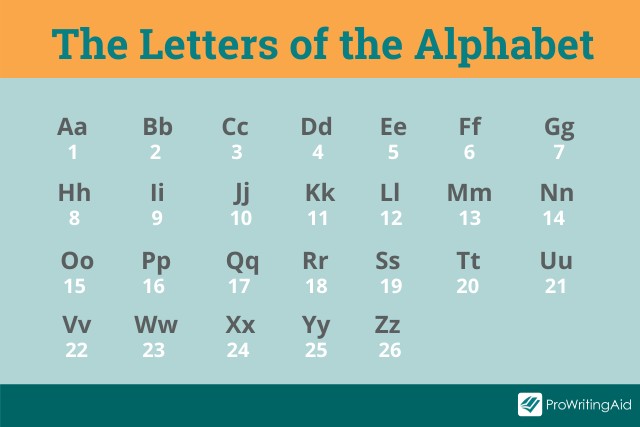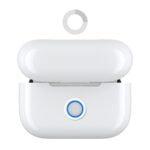An alphabet is more than just a list of letters; it’s the foundation of written language, a system of symbols representing the sounds that form our words. While the concept of an alphabet is widespread, the specifics – particularly the number of letters – vary dramatically across languages.
Have you ever wondered if every alphabet has 26 letters like English? The answer is a resounding no. The number of letters in an alphabet can differ significantly, reflecting the unique phonetic structures of diverse languages. This article delves into the fascinating world of alphabets, exploring how many letters they contain and highlighting some interesting facts about alphabetic systems globally.
Let’s embark on a linguistic journey to discover the varying sizes and origins of alphabets around the world, starting with the one you likely know best.
Decoding the English Alphabet: 26 Letters and Counting
The modern English alphabet, the one most of us learn from childhood, is composed of 26 letters. These letters, in their uppercase and lowercase forms, are the building blocks of the English language.
For clarity, here are the 26 letters of the English alphabet: A, B, C, D, E, F, G, H, I, J, K, L, M, N, O, P, Q, R, S, T, U, V, W, X, Y, Z.
Within these 26 letters, we distinguish between vowels and consonants. The vowels are generally recognized as five: A, E, I, O, U. However, it’s worth noting that ‘Y’ can sometimes function as a vowel depending on its position and phonetic role within a word.
The remaining 21 letters are classified as consonants: B, C, D, F, G, H, J, K, L, M, N, P, Q, R, S, T, V, W, X, Y, Z. (Remembering that ‘Y’ is context-dependent).
Alt text: The 26 letters of the English alphabet displayed in uppercase and lowercase, highlighting vowels in red.
A Quick Glance at the History of the English Alphabet
The journey of the English alphabet is rooted in history, tracing back to the Latin script of 7th century BC Italy. This Latin alphabet became the cornerstone for numerous European alphabets, including French, German, and, of course, English.
The Old English alphabet, documented in 1011 AD, already contained 23 of the 26 letters we use today (A, B, C, D, E, F, G, H, I, K, L, M, N, O, P, Q, R, S, T, V, X, Y, Z). This historical alphabet, recorded by the monk Byrhtferð, also featured characters no longer in use, such as the long S (ſ), Eth (Ð, ð), Thorn (þ), Wynn (ƿ), and Ash (ᚫ, later Æ, æ).
The letters J, U, and W are later additions to the English alphabet. Interestingly, until 1835, the ampersand (&), representing ‘and’, was also considered the 27th letter of the English alphabet, positioned after Z.
Alt text: Fun fact image stating “The ampersand used to be the 27th letter of the alphabet”.
Alphabets Around the World: Letter Count in Various Languages
The English alphabet is just one piece of a much larger, more diverse puzzle. Let’s explore the number of letters in alphabets from different languages across the globe.
Arabic Alphabet: A Consonantal System of 28 Letters
The Arabic alphabet is comprised of 28 letters. A key characteristic of the Arabic alphabet is that it primarily represents consonants. Vowels are indicated through separate symbols or diacritics placed above or below the consonants.
Arabic script is written from right to left and is cursive, meaning letters are connected within words. Beyond the 28 core letters, Arabic writing utilizes additional symbols to denote short vowels and guide pronunciation.
Here are the 28 letters of the Arabic alphabet, written in their script form: غ ظ ض ذ خ ث ت ش ر ق ص ف ع س ن م ل ك ي ط ح ز و ه د ج ب أ
Alt text: Image displaying the 28 letters of the Arabic alphabet in their script form, written from right to left.
Spanish Alphabet: 27 Letters with Unique Characters
The Spanish alphabet consists of 27 letters. It shares the same 26 letters as the English alphabet but includes the additional letter “Ñ” (ñ), which is positioned after “N”.
Historically, the Spanish alphabet contained 29 letters. The digraphs “CH” and “LL,” each with distinct pronunciations, were considered separate letters until 2010.
The 27 letters of the Spanish alphabet are: A, B, C, D, E, F, G, H, I, J, K, L, M, N, Ñ, O, P, Q, R, S, T, U, V, W, X, Y, Z.
French Alphabet: 26 Letters Plus Accent Marks
Similar to English, the French alphabet uses 26 letters. These are the same 26 letters found in the English alphabet.
French writing incorporates accent marks, such as é, à, ç, and ê. However, these accents are considered modifiers of the base letters rather than distinct letters themselves. They alter pronunciation but do not expand the core alphabet count.
The 26 letters of the French alphabet are: A, B, C, D, E, F, G, H, I, J, K, L, M, N, O, P, Q, R, S, T, U, V, W, X, Y, Z.
Russian Alphabet: A Cyrillic System with 33 Letters
The modern Russian alphabet, a member of the Cyrillic script family, is made up of 33 letters. This alphabet is richer in vowel representation compared to some other systems. It includes 21 consonants, 10 vowels, and two signs (the hard sign and the soft sign) which modify pronunciation rather than representing sounds themselves.
The 33 letters of the Russian alphabet are: А, Б, В, Г, Д, Е, Ё, Ж, З, И, Й, К, Л, М, Н, О, П, Р, С, Т, У, Ф, Х, Ц, Ч, Ш, Щ, Ъ, Ы, Ь, Э, Ю, Я.
Alt text: Image displaying the 33 letters of the Russian alphabet in Cyrillic script, showcasing the variety of characters.
Greek Alphabet: The Foundation of Many Scripts with 24 Letters
The Modern Greek alphabet has 24 letters. This alphabet holds historical significance as it served as a foundation for both the Latin and Cyrillic alphabets.
Here are the 24 letters of the Greek alphabet, shown in both uppercase and lowercase forms: Α α, Β β, Γ γ, Δ δ, Ε ε, Ζ ζ, Η η, Θ θ, Ι ι, Κ κ, Λ λ, Μ μ, Ν ν, Ξ ξ, Ο ο, Π π, Ρ ρ, Σ σ/ς, Τ τ, Υ υ, Φ φ, Χ χ, Ψ ψ, Ω ω.
Hebrew Alphabet: 22 Consonantal Letters with Final Forms
The Hebrew alphabet contains 22 letters. Also known as Jewish script or square script, Hebrew is written from right to left, similar to Arabic. It does not distinguish between uppercase and lowercase letters. Like Arabic, the Hebrew alphabet is primarily consonantal, with vowels typically indicated by diacritics (though modern Hebrew often uses vowel letters).
The 22 letters of the Hebrew alphabet are: כ י ט ח ז ו ה ז ג ב א ת ש ר ק צ פ ע ס נ מ ל
Intriguingly, five of these letters have different forms when they appear at the end of a word. These “final forms” are: ץ ף ן ם ך
Alt text: Image showing the 22 letters of the Hebrew alphabet in their script form, written from right to left, highlighting the unique characters.
Conclusion: Alphabet Diversity is a Reflection of Linguistic Richness
As we’ve explored, the answer to “how many letters in the alphabet?” isn’t a single number. It depends entirely on the language and the specific alphabet used to write it. From the 22 letters of the Hebrew alphabet to the 33 of the Russian alphabet, the diversity in letter count reflects the fascinating variations in how languages represent sounds in written form.
This journey through different alphabets highlights the rich tapestry of human communication and the many ingenious ways we’ve developed to transcribe our spoken words. Exploring alphabets is not just a matter of counting letters; it’s a glimpse into the history, culture, and unique characteristics of languages around the world.
Ready to Refine Your Writing? Discover ProWritingAid.
Alt text: Screenshot of ProWritingAid software interface showing error correction suggestions for the word “alphabet”.

